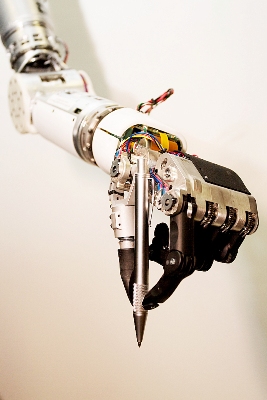DARPA has aimed to provide an option for service-disabled soldiers to rejoin their service by providing improved quality of life.
 A prosthetic arm performing reach and grasp task
A prosthetic arm performing reach and grasp task
In the year 2006, the company hosted a Revolutionizing Prosthetics Program for improvising the available upper-limb prosthetic technology. Since the commencement of this program, the Revolutionizing Prosthetics groups have developed two anthromorphic advanced modular prototype prosthetic arm systems such as sockets. The arm systems provide a wide range of dexterity, control and movement options. The upper-limb prosthetic technology is being improved with the help of the company’s partnerships and involvement with other research groups.
Research teams at Brown University, Massachusetts General Hospital and Providence VA Medical Center have published a development report on 17 May, 2012 in the issue called ‘Nature’. The report illustrates how the direct neural interface system regulates a prosthetic arm in humans suffering from brainstem stoke. Drs. Leigh Hochberg and John Donoghue, Professors and VA researchers at Brown/Harvard and Brown, respectively, lead the BrainGate research group, with a fund from the Department of Veterans Affairs. The Defense Advanced Research Projects Agency, a provider of Generation 2 advanced arm system introduced by DEKA under the company’s Revolutionizing Prosthetics program, jointly with the fund from the National Institutes of Health takes part in this research project. Two tetraplegic patients were subjected to the implantation of microelectrode arrays in the motor cortex of their brains. With this implanted arrays, the patients can regulate the movement of their prosthetic arm across 3D space and also allow the arm to perform grasp and reach tasks.